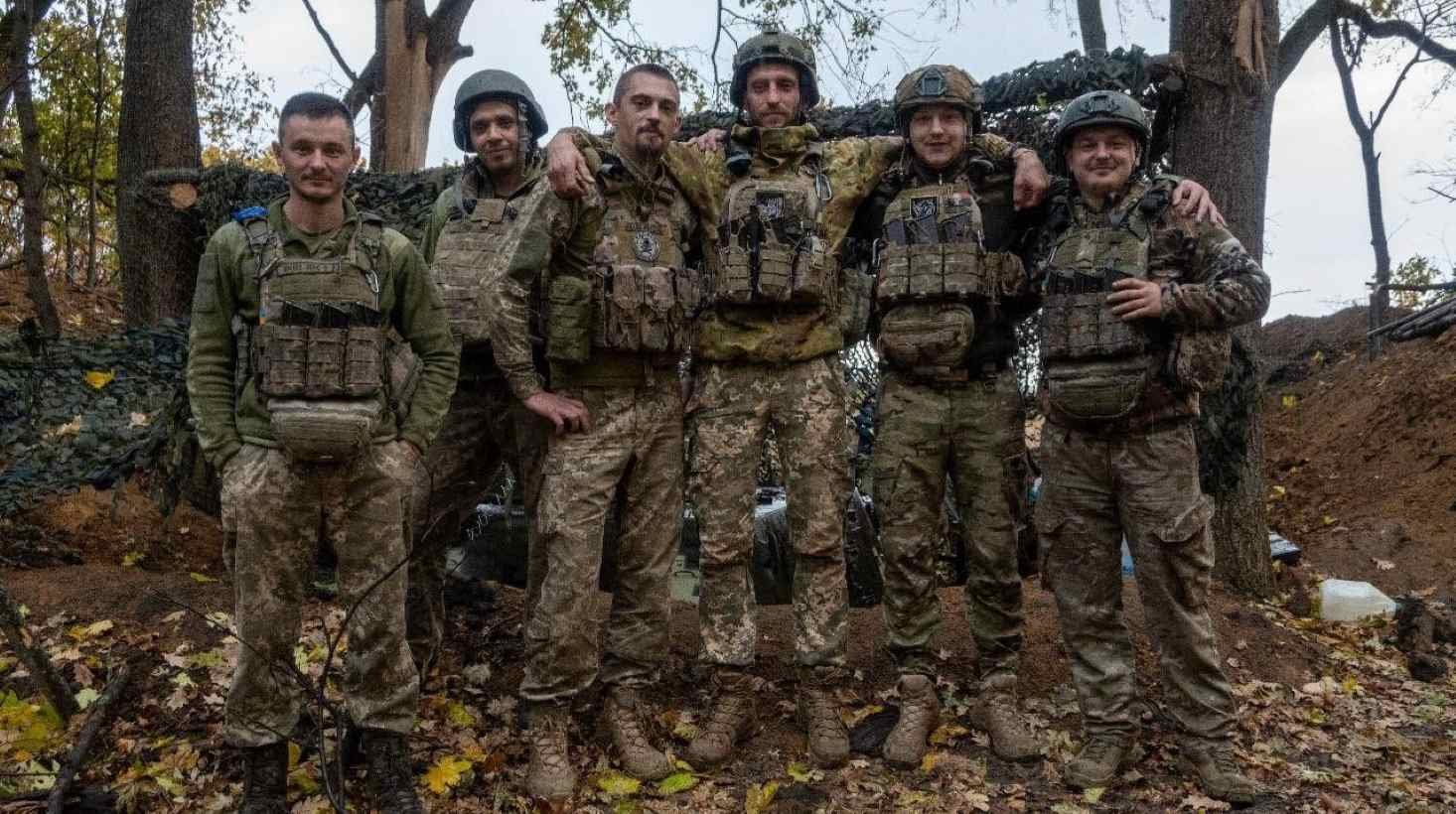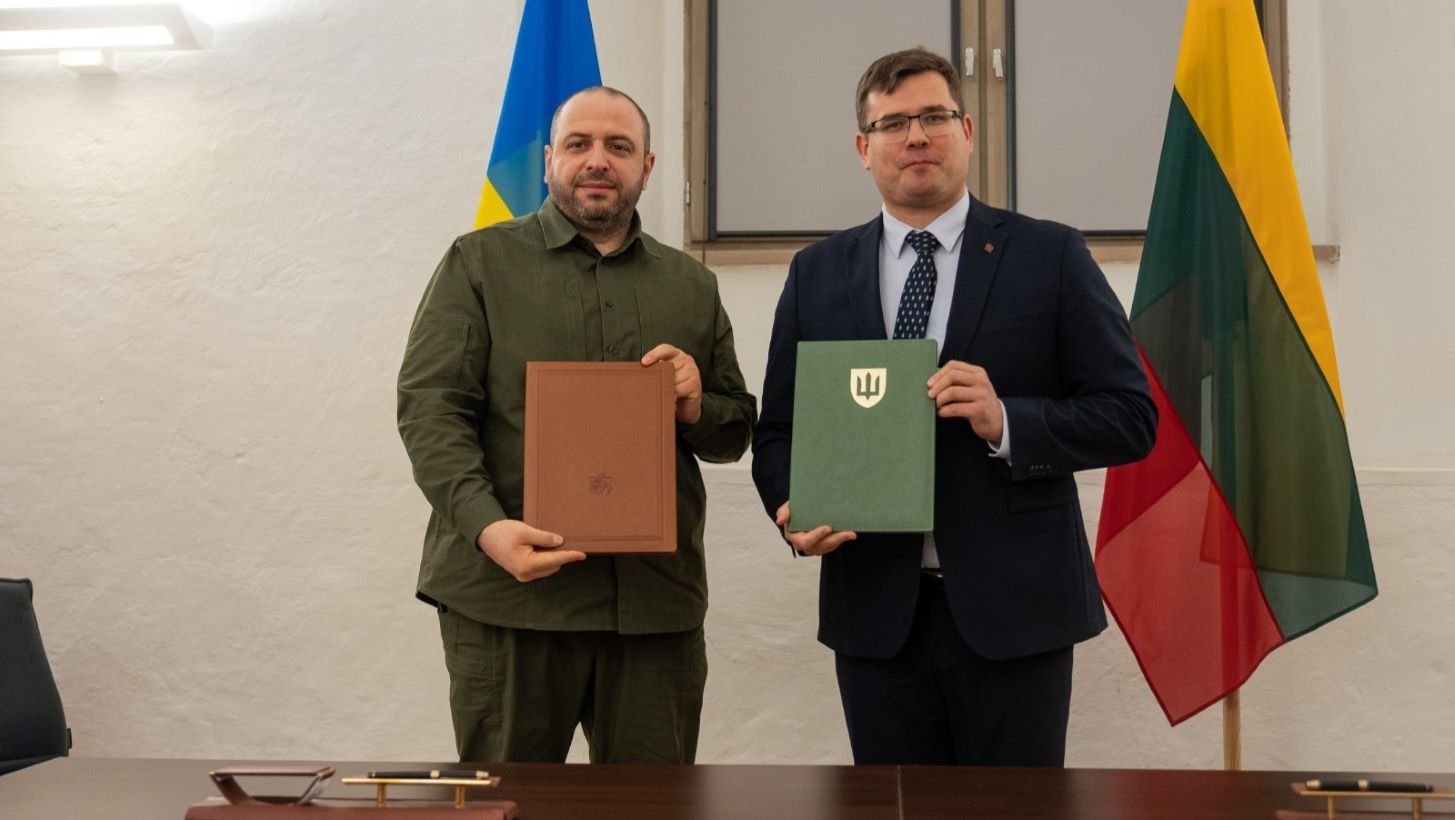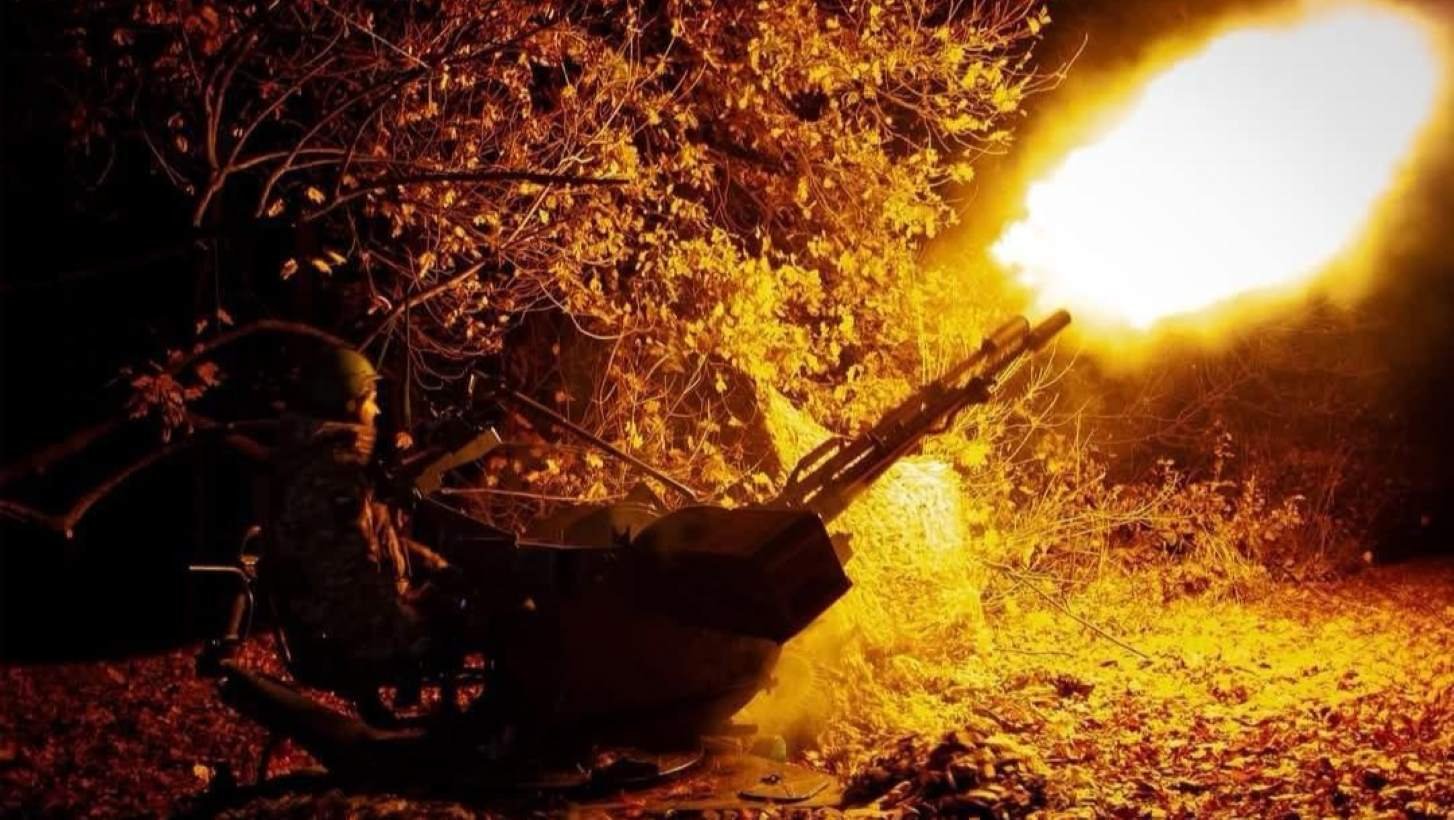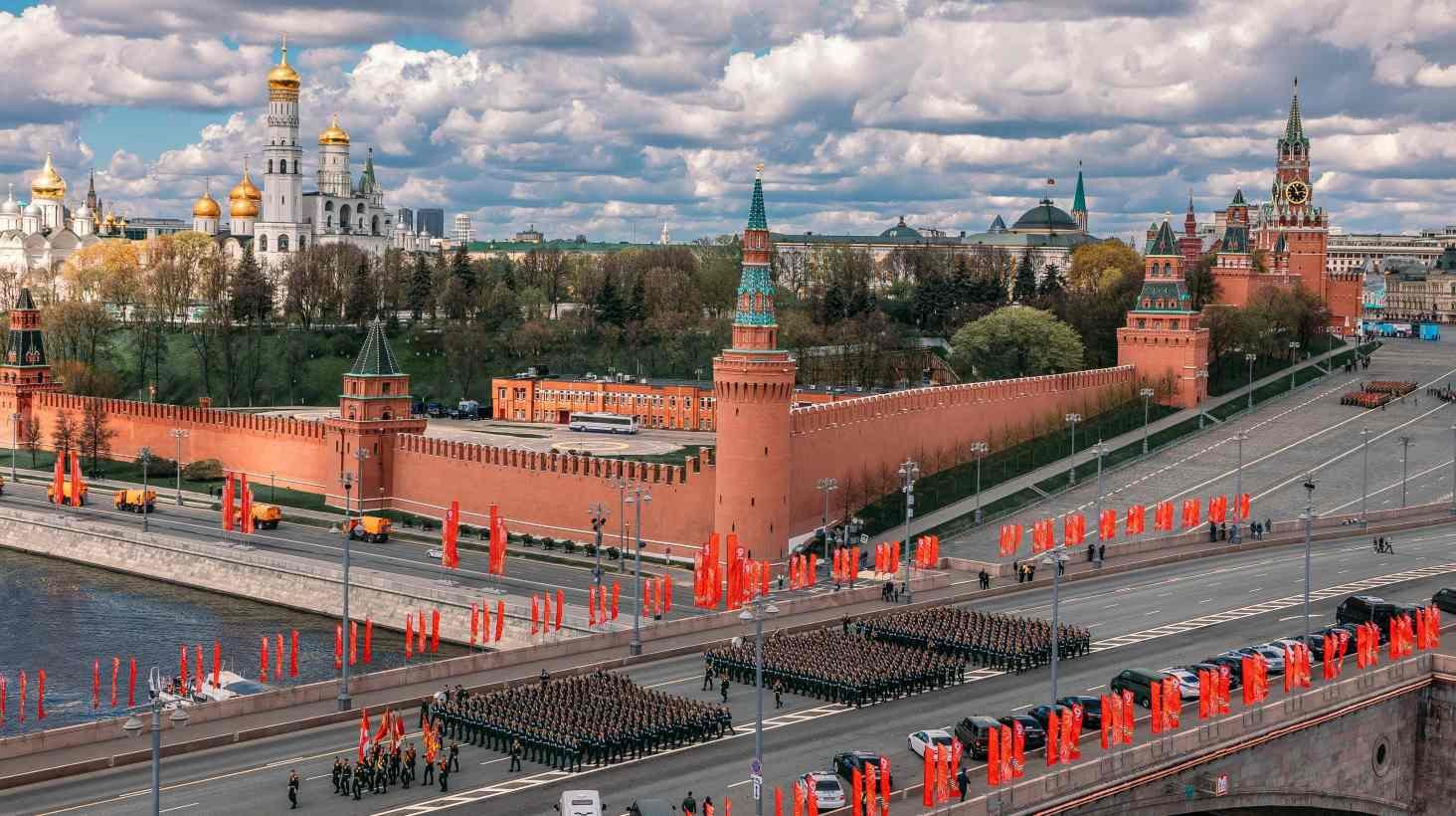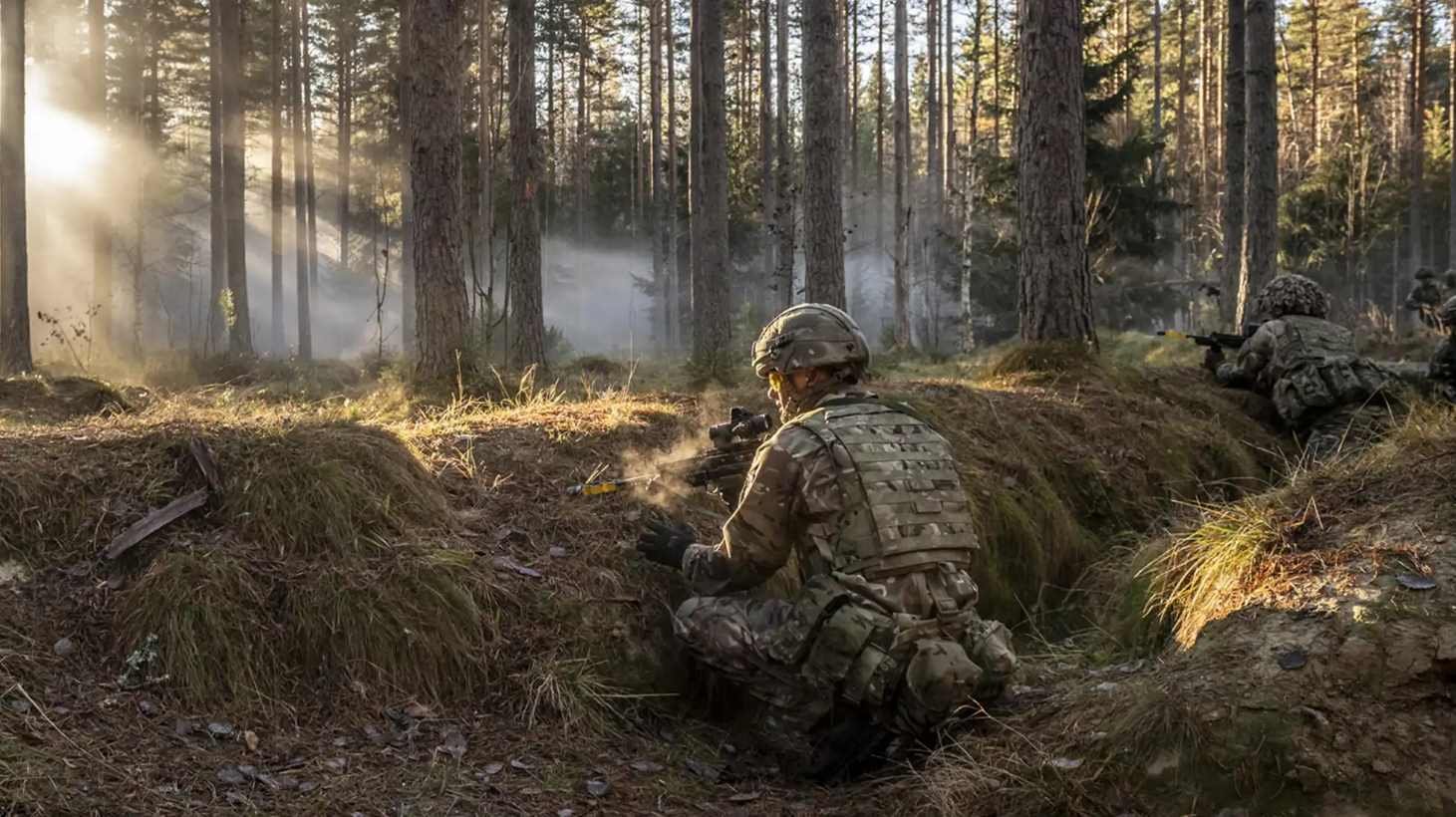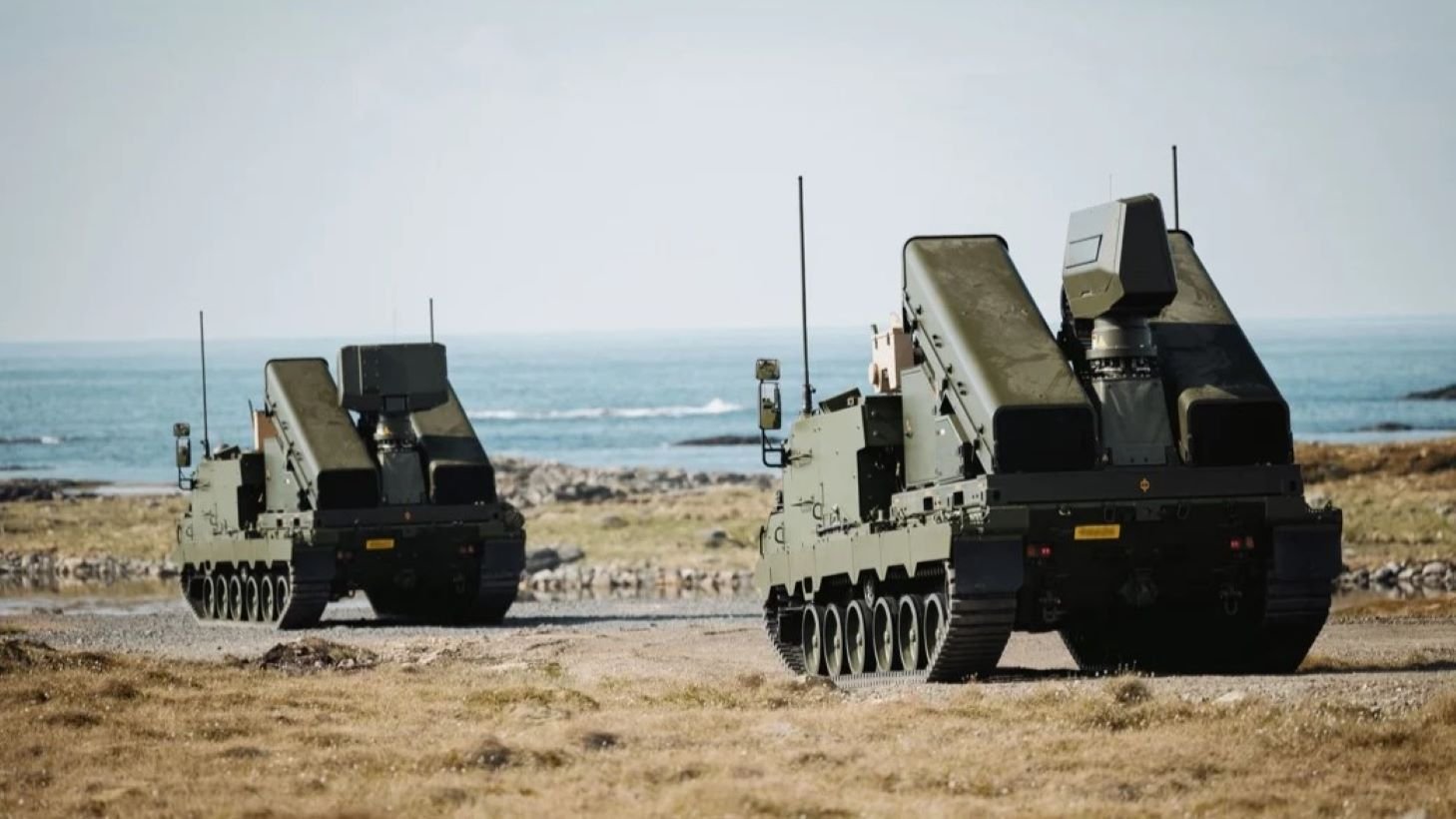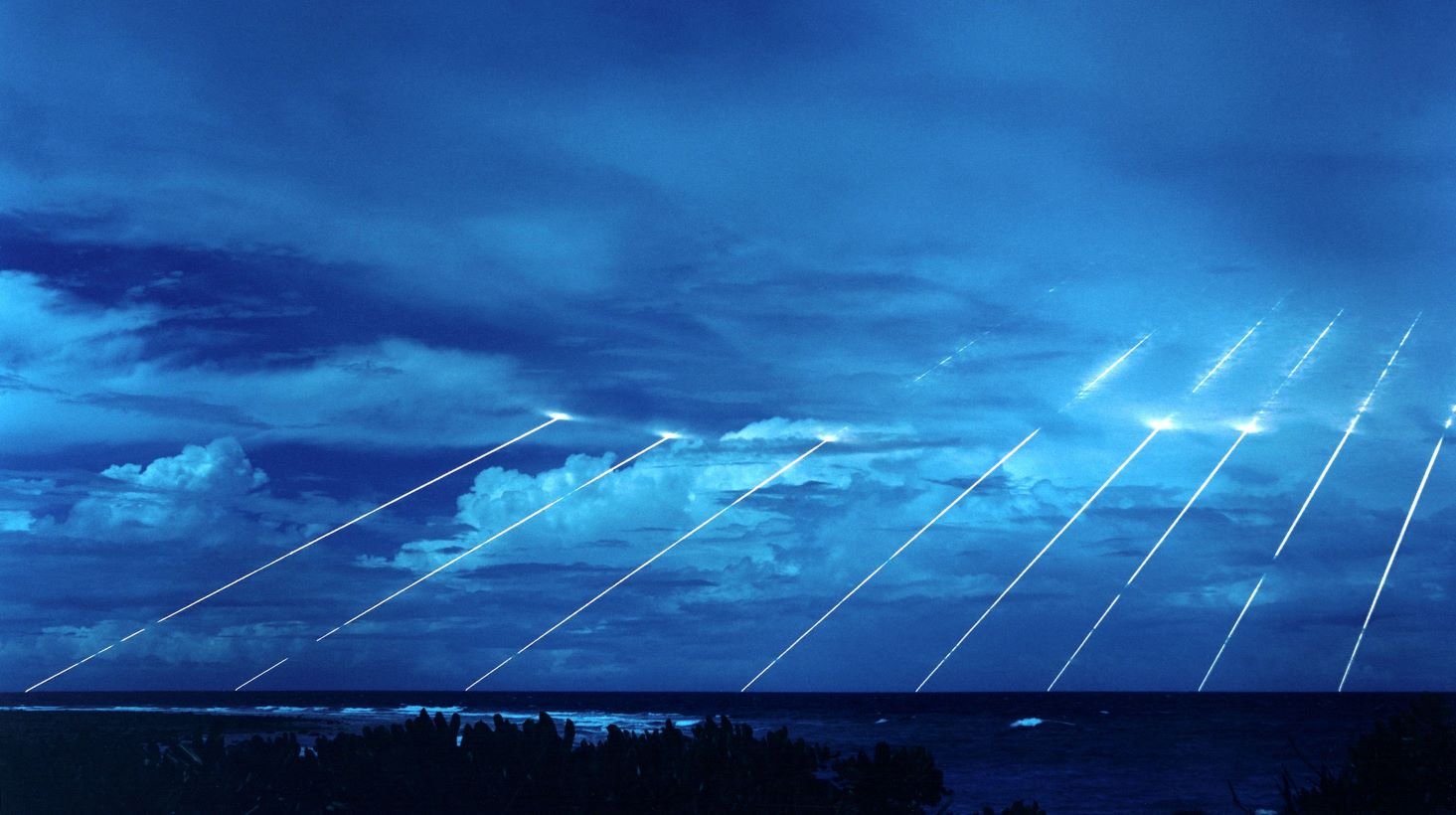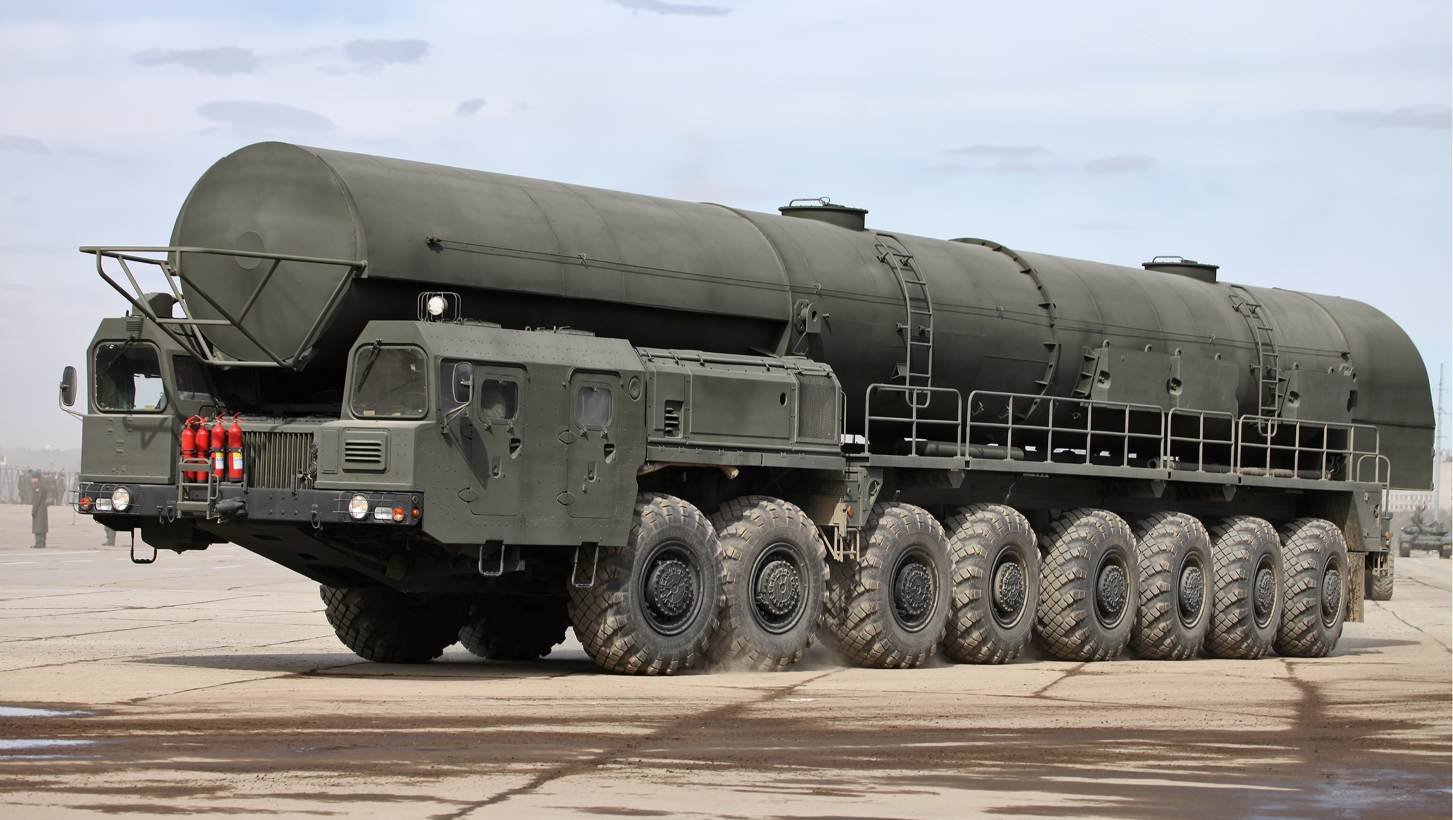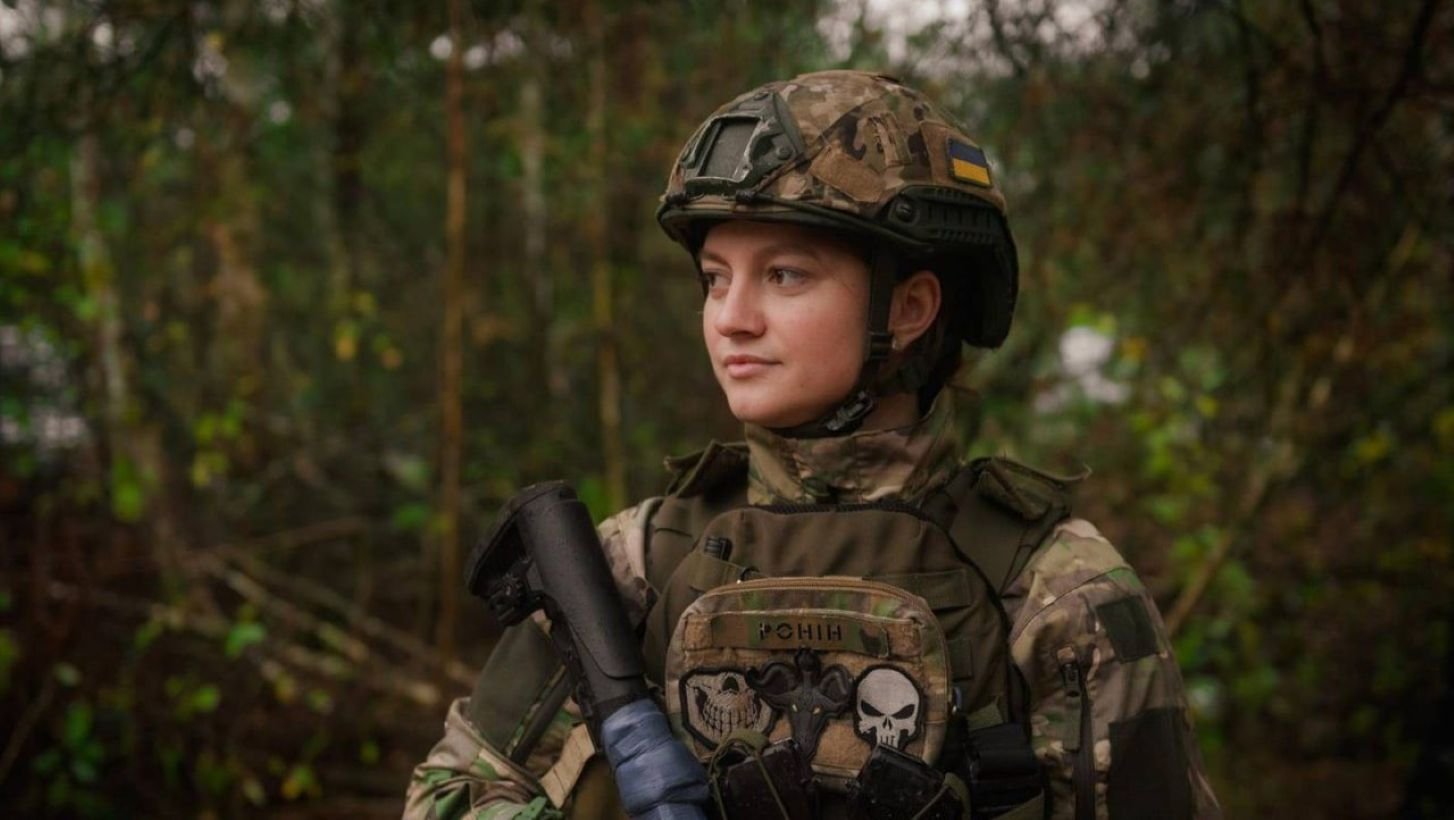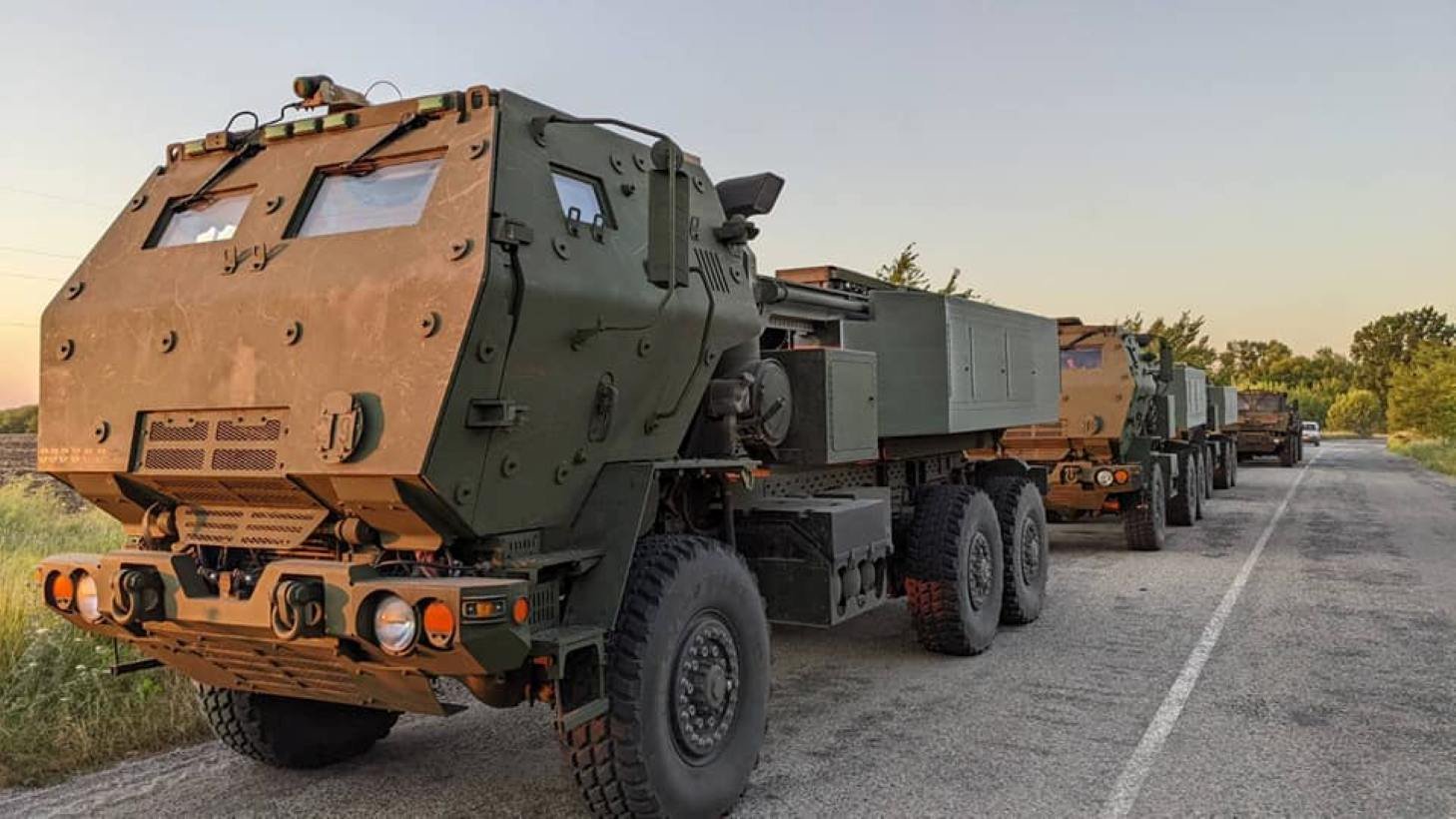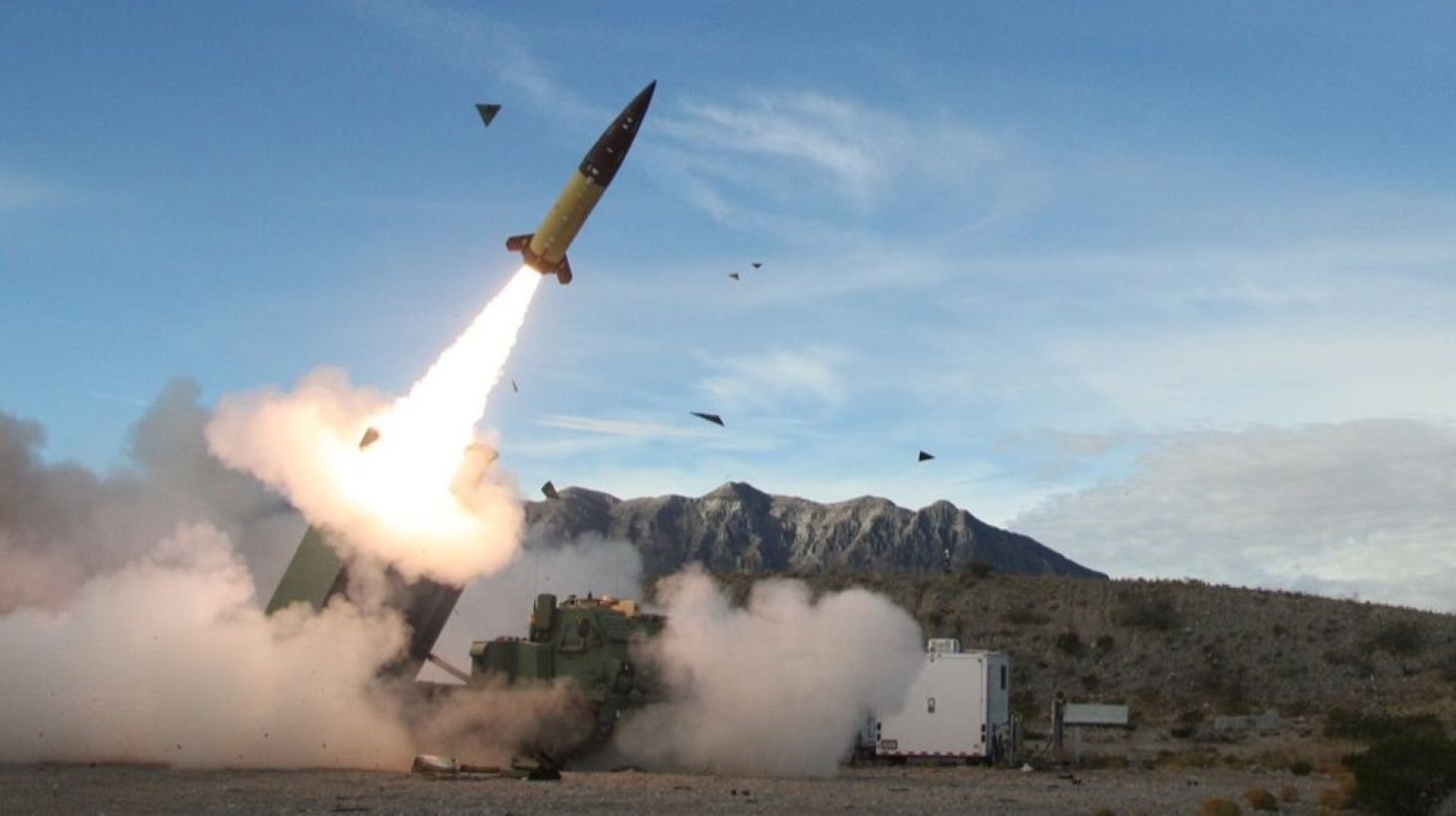-
Posts
790 -
Joined
-
Last visited
Content Type
Profiles
Uncrowned Armory News
Prepping Cookbook
Conspiracy Theories
Uncrowned Tactical Sports News
Prepping
Forums
Events
Everything posted by Uncrowned Guard
-
Immense Casualties In Ukraine-Russia War, according to The Economist The Economist, based on its estimates published on November 26, has put forth that between 60,000 to 100,000 Ukrainian soldiers have lost their lives in the overarching conflict. Up to 400,000 additional soldiers are reportedly too wounded to partake in further combat. Warfare Impact and Calculations The President of Ukraine, Volodymyr Zelensky, has been rather discreet about the nation's military casualties, with acknowledgments as of February noting the loss of about 31,000 Ukrainian fighters. However, The Economist's numerics are based on a compilation of data; intelligence reports (both leaked and published), inputs from defense officials and researchers, as well as open-source intelligence. According to the data, the catastrophic war has caused Russia and Ukraine to lose a larger proportion of their population as compared to the United States during the combined years of the Korean and Vietnam wars. A striking revelation from The Economist reports, that almost one in 20 men of fighting age in Ukraine have been killed or injured due to the war. Comparative Estimates and Casualty Concealment Comparable casualty approximations were also made by the Wall Street Journal in September. The publication projected a loss of 80,000 Ukrainian soldiers, with 400,000 injuries. The Russian side was estimated to bear up to 200,000 deaths and 400,000 injuries. The precise numbers, however, remain hard to establish, given the secretive stature maintained by both Kyiv and Moscow on the topic of military casualties. Up until September 2022, Russian authorities have only made public a casualty count of 5,937 soldiers. In contrast, as per the General Staff of Ukraine's Armed Forces, Russia's overall losses exceeded 735,000, as of November 27. Consequently, Russia's casualty count from the full-scale war is reckoned to be greater than all other wars it has participated in since 1945. Civilian Casualties: The Unaccounted Victims The Economist asserts that estimating civilian casualties is an even more challenging endeavor, with the possible numbers being in the tens of thousands. The U.N. mission based in Ukraine has confirmed the loss of 11,743 civilians until this past summer. However, these figures may not capture the full range of the civilian toll, considering the obstacles set by Russia in permitting monitors to access occupied territories. Of these, areas like Mariupol, which presumably saw the heaviest civilian casualties, are particularly of interest.
-
- ukraine-russia war
- military casualties
- (and 3 more)
-
Immense Casualties In Ukraine-Russia War, according to The Economist The Economist, based on its estimates published on November 26, has put forth that between 60,000 to 100,000 Ukrainian soldiers have lost their lives in the overarching conflict. Up to 400,000 additional soldiers are reportedly too wounded to partake in further combat. Warfare Impact and Calculations The President of Ukraine, Volodymyr Zelensky, has been rather discreet about the nation's military casualties, with acknowledgments as of February noting the loss of about 31,000 Ukrainian fighters. However, The Economist's numerics are based on a compilation of data; intelligence reports (both leaked and published), inputs from defense officials and researchers, as well as open-source intelligence. According to the data, the catastrophic war has caused Russia and Ukraine to lose a larger proportion of their population as compared to the United States during the combined years of the Korean and Vietnam wars. A striking revelation from The Economist reports, that almost one in 20 men of fighting age in Ukraine have been killed or injured due to the war. Comparative Estimates and Casualty Concealment Comparable casualty approximations were also made by the Wall Street Journal in September. The publication projected a loss of 80,000 Ukrainian soldiers, with 400,000 injuries. The Russian side was estimated to bear up to 200,000 deaths and 400,000 injuries. The precise numbers, however, remain hard to establish, given the secretive stature maintained by both Kyiv and Moscow on the topic of military casualties. Up until September 2022, Russian authorities have only made public a casualty count of 5,937 soldiers. In contrast, as per the General Staff of Ukraine's Armed Forces, Russia's overall losses exceeded 735,000, as of November 27. Consequently, Russia's casualty count from the full-scale war is reckoned to be greater than all other wars it has participated in since 1945. Civilian Casualties: The Unaccounted Victims The Economist asserts that estimating civilian casualties is an even more challenging endeavor, with the possible numbers being in the tens of thousands. The U.N. mission based in Ukraine has confirmed the loss of 11,743 civilians until this past summer. However, these figures may not capture the full range of the civilian toll, considering the obstacles set by Russia in permitting monitors to access occupied territories. Of these, areas like Mariupol, which presumably saw the heaviest civilian casualties, are particularly of interest. View full article
-
- ukraine-russia war
- military casualties
- (and 3 more)
-
Aid Trucks Looted in Gaza: An Alarming Trigger to Skyrocketing Food Prices Unstable conditions and escalating food prices have been witnessed in the Gaza Strip following a violent attack and subsequent looting of almost a hundred aid trucks operated by the United Nations (UN), originally brought in from Israel. Dire Aftermath - Distress Calls from United Nations Relief Agency As reported by the United Nations Relief and Works Agency for Palestine Refugees in the Near East (UNRWA), out of 109 trucks that made it into central Gaza on Saturday, a shocking number of 97 were forcibly unloaded of their aid at gunpoint and then brutally ransacked. The robbery has drastically exacerbated the severity of food shortages in the area. According to the UNRWA, all eight UN-backed bakeries located in Deir al-Balah and Khan Younis have been grappling with a sharp decline in flour supplies for weeks, forcing several to cease operations completely. Without immediate assistance, an already-burgeoning food crisis could intensify, endangering the survival prospects of over 2 million people who rely upon humanitarian aid. Citizens' Perspective - Survival Amidst Inflation A Deir al-Balah resident revealed to the Associated Press that the current situation has led to a steep increase in the price of flour, now soaring above $100 per bag, assuming it is even obtainable. Spokesperson for the UN, Stephane Dujarric, added that the convoy was ordered by the Israeli military to venture via an "alternative, unfamiliar route," post the aid being transported through the Kerem Shalom crossing. It was near this crossing that the trucks fell prey to attacks. Laying Blame - Casting Shadows on Hamas Israel points accusations towards criminal gangs and the Palestinian terrorist group, Hamas, holding them accountable for the aid's theft. In reversal, a senior Hamas official abroad, Bassem Naim, alleged that the guilty parties were young Bedouin men operating east of Rafah, proximal to Israeli military positions. Al-Aqsa TV, under the control of the militants, declared that Gaza's Hamas-run security forces had initiated an operation against the looters, resulting in 20 fatalities. Greater Horrors - Residents' Plight Amidst the political blame game, the dire interior conditions are worsening. Nora Muhanna, a Gaza City homeless resident, voiced her despair to the AP. She shared, "From the beginning, there are no goods, and even if they are available, there is no money." Moreover, the UNRWA criticized Israeli authorities for neglecting their legal responsibilities under international law to ensure the basic survival needs of the population are met and aid delivery is secure.
-
- gaza strip
- food crisis
-
(and 3 more)
Tagged with:
-
Aid Trucks Looted in Gaza: An Alarming Trigger to Skyrocketing Food Prices Unstable conditions and escalating food prices have been witnessed in the Gaza Strip following a violent attack and subsequent looting of almost a hundred aid trucks operated by the United Nations (UN), originally brought in from Israel. Dire Aftermath - Distress Calls from United Nations Relief Agency As reported by the United Nations Relief and Works Agency for Palestine Refugees in the Near East (UNRWA), out of 109 trucks that made it into central Gaza on Saturday, a shocking number of 97 were forcibly unloaded of their aid at gunpoint and then brutally ransacked. The robbery has drastically exacerbated the severity of food shortages in the area. According to the UNRWA, all eight UN-backed bakeries located in Deir al-Balah and Khan Younis have been grappling with a sharp decline in flour supplies for weeks, forcing several to cease operations completely. Without immediate assistance, an already-burgeoning food crisis could intensify, endangering the survival prospects of over 2 million people who rely upon humanitarian aid. Citizens' Perspective - Survival Amidst Inflation A Deir al-Balah resident revealed to the Associated Press that the current situation has led to a steep increase in the price of flour, now soaring above $100 per bag, assuming it is even obtainable. Spokesperson for the UN, Stephane Dujarric, added that the convoy was ordered by the Israeli military to venture via an "alternative, unfamiliar route," post the aid being transported through the Kerem Shalom crossing. It was near this crossing that the trucks fell prey to attacks. Laying Blame - Casting Shadows on Hamas Israel points accusations towards criminal gangs and the Palestinian terrorist group, Hamas, holding them accountable for the aid's theft. In reversal, a senior Hamas official abroad, Bassem Naim, alleged that the guilty parties were young Bedouin men operating east of Rafah, proximal to Israeli military positions. Al-Aqsa TV, under the control of the militants, declared that Gaza's Hamas-run security forces had initiated an operation against the looters, resulting in 20 fatalities. Greater Horrors - Residents' Plight Amidst the political blame game, the dire interior conditions are worsening. Nora Muhanna, a Gaza City homeless resident, voiced her despair to the AP. She shared, "From the beginning, there are no goods, and even if they are available, there is no money." Moreover, the UNRWA criticized Israeli authorities for neglecting their legal responsibilities under international law to ensure the basic survival needs of the population are met and aid delivery is secure. View full article
-
- gaza strip
- food crisis
-
(and 3 more)
Tagged with:
-

Lithuania Boosts Ukraine's Defense with €10M Drone Funding
Uncrowned Guard posted an article in Ongoing Conflicts
Lithuania to Power Production of Ukrainian Drones Lithuania has committed to funding the production of long-range drones for Ukraine, according to Ukrainian Defense Minister Rustem Umerov. He made the revelation on Nov. 23, adding a new dynamic to the security relationship between Lithuania and Ukraine. A Dedicated Fund for Defense Technology A long-term agreement has been structured between Ukraine and Lithuania to fuel the production of drones. The deal promises an initial grant of 10 million euros, primarily earmarked for the development of Ukraine's Palianytsia missile-like drones. This funding signifies the strategic importance Lithuania sees in supporting Ukraine's advanced defense technology initiatives. Reflecting on this partnership, Defense Minister Umerov acknowledged, "I expressed gratitude to the Republic of Lithuania for its unwavering support in these trying times, and personally thanked Defense Minister Laurynas Kasciunas for his leadership." Planning for Enhanced Defense Collaboration by 2025 In addition to these funding arrangements, Umerov and his Lithuanian counterpart reportedly examined potential avenues for expanded defense industry cooperation between the two nations, identifying key priorities for 2025. Strategies discussed involve equipping Ukrainian brigades, strengthening air defense infrastructure, and amply supplying ammunition. The strategic collaboration between Lithuania and Ukraine aims at strengthening the defense capabilities of both nations and promoting an environment of regional stability. A Continuation of International Support for Ukraine Lithuania's funding announcement comes on the heels of similar pledges from other countries. On Nov. 22, the Defense Ministry stated that Sweden had agreed to underwrite the production of long-range drones for Ukraine. Sweden's commitment aids Ukraine's defenses, which have been put under strain due to Russia's continuous aggressive approach. Through these partnerships, Ukraine's drone production receives significant international support, reinforcing its defense capabilities and contributing to regional security endeavors. -
Lithuania to Power Production of Ukrainian Drones Lithuania has committed to funding the production of long-range drones for Ukraine, according to Ukrainian Defense Minister Rustem Umerov. He made the revelation on Nov. 23, adding a new dynamic to the security relationship between Lithuania and Ukraine. A Dedicated Fund for Defense Technology A long-term agreement has been structured between Ukraine and Lithuania to fuel the production of drones. The deal promises an initial grant of 10 million euros, primarily earmarked for the development of Ukraine's Palianytsia missile-like drones. This funding signifies the strategic importance Lithuania sees in supporting Ukraine's advanced defense technology initiatives. Reflecting on this partnership, Defense Minister Umerov acknowledged, "I expressed gratitude to the Republic of Lithuania for its unwavering support in these trying times, and personally thanked Defense Minister Laurynas Kasciunas for his leadership." Planning for Enhanced Defense Collaboration by 2025 In addition to these funding arrangements, Umerov and his Lithuanian counterpart reportedly examined potential avenues for expanded defense industry cooperation between the two nations, identifying key priorities for 2025. Strategies discussed involve equipping Ukrainian brigades, strengthening air defense infrastructure, and amply supplying ammunition. The strategic collaboration between Lithuania and Ukraine aims at strengthening the defense capabilities of both nations and promoting an environment of regional stability. A Continuation of International Support for Ukraine Lithuania's funding announcement comes on the heels of similar pledges from other countries. On Nov. 22, the Defense Ministry stated that Sweden had agreed to underwrite the production of long-range drones for Ukraine. Sweden's commitment aids Ukraine's defenses, which have been put under strain due to Russia's continuous aggressive approach. Through these partnerships, Ukraine's drone production receives significant international support, reinforcing its defense capabilities and contributing to regional security endeavors. View full article
-

Ukraine's Kursk Setback: 40% of Territory Retaken by Russia
Uncrowned Guard posted an article in Ongoing Conflicts
Ukraine's Lost Ground: Over 40% of Initial Kursk Incursion Reclaimed Ukraine, in the throes of territorial conflict with Russia, has conceded over 40 per cent of its former territorial gains in Russia's Kursk Oblast. This stems from heightened Russian counteractions, as reported by Reuters on November 23 citing a Ukrainian General Staff source. According to the confidential source, at the peak of their territorial control, Ukraine's dominion extended over an estimated 1,376 square kilometers. However, this region has since dwindled due to escalating Russian counteractions. "Now we control approximately 800 square kilometers. We will retain control over this territory as long as militarily feasible," the source informed Reuters. Ukraine's initial acquisition in Kursk Oblast occurred during a surprising intrusion into Russian terrain earlier this August. Since that time, Russia has commenced extensive countermeasures to reclaim its territory. The Strategic Undertone: Putin's Plan Ahead of Trump's Inauguration NATO allies speculate Russian President Vladimir Putin's determination to regain territory lost in Kursk Oblast before U.S. President-elect Donald Trump's inauguration on January 20. As noted by The Telegraph, the objective likely involves establishing a strengthened position ahead of potential peace discussions. The same source noted that an estimated 60,000 Russian army personnel are currently assigned in Kursk Oblast, with instructions to approach the border with Sumy Oblast to establish a "buffer zone," emulating Ukraine's strategy in Kursk Oblast. Prior statements from Kyiv highlighted that around 11,000 North Korean soldiers are supplementing the ongoing counteroffensive in Kursk. The Ukrainian General Staff source mentioned the majority of these North Korean soldiers are finalizing training alongside Russian forces. Worsening Conflict: Russia Steps Up Its Efforts As Russia endeavors to retake Kursk, it also ramps up efforts on the Eastern front. These intensified offensives place Ukrainian forces under rising pressure as they strive to secure pivotal positions. Meanwhile, the Deputy Head of Ukraine's military intelligence agency (HUR), Vadym Skibitskyi, revealed a daunting piece of information on November 21. A staggering sum of roughly 580,000 Russian soldiers is involved in combat across Ukraine. -
Ukraine's Lost Ground: Over 40% of Initial Kursk Incursion Reclaimed Ukraine, in the throes of territorial conflict with Russia, has conceded over 40 per cent of its former territorial gains in Russia's Kursk Oblast. This stems from heightened Russian counteractions, as reported by Reuters on November 23 citing a Ukrainian General Staff source. According to the confidential source, at the peak of their territorial control, Ukraine's dominion extended over an estimated 1,376 square kilometers. However, this region has since dwindled due to escalating Russian counteractions. "Now we control approximately 800 square kilometers. We will retain control over this territory as long as militarily feasible," the source informed Reuters. Ukraine's initial acquisition in Kursk Oblast occurred during a surprising intrusion into Russian terrain earlier this August. Since that time, Russia has commenced extensive countermeasures to reclaim its territory. The Strategic Undertone: Putin's Plan Ahead of Trump's Inauguration NATO allies speculate Russian President Vladimir Putin's determination to regain territory lost in Kursk Oblast before U.S. President-elect Donald Trump's inauguration on January 20. As noted by The Telegraph, the objective likely involves establishing a strengthened position ahead of potential peace discussions. The same source noted that an estimated 60,000 Russian army personnel are currently assigned in Kursk Oblast, with instructions to approach the border with Sumy Oblast to establish a "buffer zone," emulating Ukraine's strategy in Kursk Oblast. Prior statements from Kyiv highlighted that around 11,000 North Korean soldiers are supplementing the ongoing counteroffensive in Kursk. The Ukrainian General Staff source mentioned the majority of these North Korean soldiers are finalizing training alongside Russian forces. Worsening Conflict: Russia Steps Up Its Efforts As Russia endeavors to retake Kursk, it also ramps up efforts on the Eastern front. These intensified offensives place Ukrainian forces under rising pressure as they strive to secure pivotal positions. Meanwhile, the Deputy Head of Ukraine's military intelligence agency (HUR), Vadym Skibitskyi, revealed a daunting piece of information on November 21. A staggering sum of roughly 580,000 Russian soldiers is involved in combat across Ukraine. View full article
-
Nearly 580,000 Russian Soldiers Battling Ukraine Amid Mounting Casualties In the ongoing conflict against Ukraine, Russia has engaged almost 580,000 of its ground forces, reported Vadym Skibitskyi, the deputy head of Ukraine's military intelligence agency (HUR) to Interfax Ukraine on Nov. 21. This formidable figure reflects Russia's determined efforts to enlarge its military apparatus engaging in the Ukrainian war. The Russian government has amended its policies to incentivize enlistment in the Russian army. These amendments absolve prospective defendants from criminal liability and offer financial rewards for contract service. Russian Forces' Participation Beyond Borders Skibitskyi explained this count encapsulates Russian forces stationed in Russia's Kursk Oblast, who are currently involved in combat against Ukraine's incursion into the region. According to an undisclosed source in the General Staff of Ukraine's Armed Forces cited by Suspilne, nearly 60,000 Russian military personnel are presently deployed in Kursk. Moreover, approximately 35,000 Russian Guard troops, or Rosgvardia, have been deployed in the Russian-occupied territories within Ukraine, Skibitskyi indicated. Staggering Casualties Among Russian Ranks Earlier this year, Russian President Vladimir Putin stated that close to 700,000 Russian troops were fighting in Ukraine. As of October, the Russian army has faced about 600,000 casualties since the full-on invasion began based on Pentagon calculations, and nearly 730,00 based on Ukrainian estimates. This figure underscores a particularly deadly phase of the war for Russian forces. As per data from the General Staff of Ukraine's Armed Forces, September was marked as the second most fatal month for Russian soldiers since February 2022. Pressured Ukraine Continues Its Defensive Struggle Despite the staggering casualty rates, Russian forces maintain their onslaught in eastern Ukraine, with a major focus on the cities of Pokrovsk and Toretsk in Donetsk Oblast. Despite being outnumbered and outgunned, Ukrainian soldiers persevere in the face of the mounting pressure, although they are slowly conceding territory to the aggressive Russian advances. View full article
-
- russia-ukraine war
- russian military
- (and 3 more)
-
Nearly 580,000 Russian Soldiers Battling Ukraine Amid Mounting Casualties In the ongoing conflict against Ukraine, Russia has engaged almost 580,000 of its ground forces, reported Vadym Skibitskyi, the deputy head of Ukraine's military intelligence agency (HUR) to Interfax Ukraine on Nov. 21. This formidable figure reflects Russia's determined efforts to enlarge its military apparatus engaging in the Ukrainian war. The Russian government has amended its policies to incentivize enlistment in the Russian army. These amendments absolve prospective defendants from criminal liability and offer financial rewards for contract service. Russian Forces' Participation Beyond Borders Skibitskyi explained this count encapsulates Russian forces stationed in Russia's Kursk Oblast, who are currently involved in combat against Ukraine's incursion into the region. According to an undisclosed source in the General Staff of Ukraine's Armed Forces cited by Suspilne, nearly 60,000 Russian military personnel are presently deployed in Kursk. Moreover, approximately 35,000 Russian Guard troops, or Rosgvardia, have been deployed in the Russian-occupied territories within Ukraine, Skibitskyi indicated. Staggering Casualties Among Russian Ranks Earlier this year, Russian President Vladimir Putin stated that close to 700,000 Russian troops were fighting in Ukraine. As of October, the Russian army has faced about 600,000 casualties since the full-on invasion began based on Pentagon calculations, and nearly 730,00 based on Ukrainian estimates. This figure underscores a particularly deadly phase of the war for Russian forces. As per data from the General Staff of Ukraine's Armed Forces, September was marked as the second most fatal month for Russian soldiers since February 2022. Pressured Ukraine Continues Its Defensive Struggle Despite the staggering casualty rates, Russian forces maintain their onslaught in eastern Ukraine, with a major focus on the cities of Pokrovsk and Toretsk in Donetsk Oblast. Despite being outnumbered and outgunned, Ukrainian soldiers persevere in the face of the mounting pressure, although they are slowly conceding territory to the aggressive Russian advances.
-
- russia-ukraine war
- russian military
- (and 3 more)
-
UK Committed to Defending NATO Allies Against Potential Russian Invasion The United Kingdom stands ready to dispatch troops to combat Russian incursions into NATO countries on the alliance's eastern boundary, as announced by Rob Magowan, Deputy Chief of the British Defense Staff on Nov. 21, according to Politico. Fears over escalating Russian belligerence have been mounting in Europe, sparked largely by continued forward momentum by Moscow in eastern Ukraine. Complications regarding Europe’s defensive capabilities were further intensified by the triumph of Donald Trump, a Republican, in the U.S. presidential election. Notably, Trump during his campaign frequently implied that the U.S. might withhold assistance for NATO member countries failing to fulfill defense spending obligations, sowing seeds of apprehension among European allies. UK Ready to Respond to Russian Escalation In responding to inquiries pertaining to the UK’s possible deployment of forces to NATO's eastern periphery in response to substantial Russian escalation, Magowan reassured parliamentarians that the UK would spring into action immediately if summoned. "There should be no misapprehension that if Russia invaded Eastern Europe tonight, our forces would be there on the frontline," Magowan addressed the House of Commons defense committee. Magowan further stated that the British Armed Forces wield "a spectrum of operational risks and operational strengths." This statement comes in the wake of the UK Defense Ministry's disclosure on Nov. 21 that the British Army had successfully completed live-fire trials of its Archer mobile howitzer, a swift-deploy artillery system. These tests occurred during a 12-day NATO maneuver in Finland. Concerns Over Military State Amid Readiness Confirmation Despite this firm posture, concerns are growing within the British government regarding the condition of its military, with the British Army having reached its smallest size since the 1700s, as reported by Politico. In a discussion last month, UK Defense Secretary John Healey disclosed that the state of the armed forces was "far graver than we anticipated" when his Labor Party assumed power earlier this summer. The authorities are currently undertaking a Strategic Defense Review. View full article
-
- uk defense
- nato
-
(and 3 more)
Tagged with:
-

UK Stands by NATO: Ready to Deploy Troops Against Russian Threat
Uncrowned Guard posted an article in Military News
UK Committed to Defending NATO Allies Against Potential Russian Invasion The United Kingdom stands ready to dispatch troops to combat Russian incursions into NATO countries on the alliance's eastern boundary, as announced by Rob Magowan, Deputy Chief of the British Defense Staff on Nov. 21, according to Politico. Fears over escalating Russian belligerence have been mounting in Europe, sparked largely by continued forward momentum by Moscow in eastern Ukraine. Complications regarding Europe’s defensive capabilities were further intensified by the triumph of Donald Trump, a Republican, in the U.S. presidential election. Notably, Trump during his campaign frequently implied that the U.S. might withhold assistance for NATO member countries failing to fulfill defense spending obligations, sowing seeds of apprehension among European allies. UK Ready to Respond to Russian Escalation In responding to inquiries pertaining to the UK’s possible deployment of forces to NATO's eastern periphery in response to substantial Russian escalation, Magowan reassured parliamentarians that the UK would spring into action immediately if summoned. "There should be no misapprehension that if Russia invaded Eastern Europe tonight, our forces would be there on the frontline," Magowan addressed the House of Commons defense committee. Magowan further stated that the British Armed Forces wield "a spectrum of operational risks and operational strengths." This statement comes in the wake of the UK Defense Ministry's disclosure on Nov. 21 that the British Army had successfully completed live-fire trials of its Archer mobile howitzer, a swift-deploy artillery system. These tests occurred during a 12-day NATO maneuver in Finland. Concerns Over Military State Amid Readiness Confirmation Despite this firm posture, concerns are growing within the British government regarding the condition of its military, with the British Army having reached its smallest size since the 1700s, as reported by Politico. In a discussion last month, UK Defense Secretary John Healey disclosed that the state of the armed forces was "far graver than we anticipated" when his Labor Party assumed power earlier this summer. The authorities are currently undertaking a Strategic Defense Review.-
- uk defense
- nato
-
(and 3 more)
Tagged with:
-
Kongsberg Secures Historic Air Defense Agreement with the Netherlands Kongsberg Defence & Aerospace recently unveiled its most substantial air defense contract to date, revealing a deal with the Netherlands for NASAMS and NOMADS systems through an announcement on social media. Strengthening Defense Through the CITADEL Program The landmark contract, executed on November 21, comes in the wake of a recommendation from the Dutch government tendered to Parliament on October 14 under the CITADEL program. This governmental initiative is geared towards enhancing the country's integrated air and missile defense proficiencies. Eirik Lie, President of Kongsberg Defence & Aerospace, expressed optimism following the successful contract signing and lauded the Netherlands' decision. "By choosing NASAMS and NOMADS, the Netherlands significantly augments its air defense arsenal with a system capable of addressing short- and medium-range threats. As a committed member of the extensive NASAMS user community, we are delighted to usher in the Netherlands as NOMADS’ first international user," Lie stated. Building on Established Defense Systems The Netherlands' defense capabilities were initially boosted with the procurement of the NASAMS (National Advanced Surface-to-Air Missile System) in 2006. This new purchase serves to intensify and broaden its ground-based air defense. Incorporated into the CITADEL solution is NOMADS (National Manoeuvre Air Defence System), a highly agile configuration designed for the specific purpose of short-range air defense intended to safeguard land forces in disputed territories. The NOMADS system seamlessly integrates with NASAMS as well as other NATO systems, allowing for both independent and networked operations across multiple vehicles. The Netherlands is set to commence receiving NASAMS and NOMADS systems in 2028. This marks a crucial leap forward in updating the country’s defense structure. NASAMS: A Versatile Component for Future Defense Jointly developed by the multi-national firms Kongsberg and Raytheon of the United States, NASAMS claims the status as the first operational network-centric short- to medium-range ground-based air defense system worldwide. The system is designed to provide robust protection against a broad range of aerial threats, making it an adaptable element for contemporary air defense. View full article
-
- kongsberg defence & aerospace
- nasams
- (and 3 more)
-

Kongsberg Seals Record Air Defense Deal with Netherlands
Uncrowned Guard posted an article in Defense Industry
Kongsberg Secures Historic Air Defense Agreement with the Netherlands Kongsberg Defence & Aerospace recently unveiled its most substantial air defense contract to date, revealing a deal with the Netherlands for NASAMS and NOMADS systems through an announcement on social media. Strengthening Defense Through the CITADEL Program The landmark contract, executed on November 21, comes in the wake of a recommendation from the Dutch government tendered to Parliament on October 14 under the CITADEL program. This governmental initiative is geared towards enhancing the country's integrated air and missile defense proficiencies. Eirik Lie, President of Kongsberg Defence & Aerospace, expressed optimism following the successful contract signing and lauded the Netherlands' decision. "By choosing NASAMS and NOMADS, the Netherlands significantly augments its air defense arsenal with a system capable of addressing short- and medium-range threats. As a committed member of the extensive NASAMS user community, we are delighted to usher in the Netherlands as NOMADS’ first international user," Lie stated. Building on Established Defense Systems The Netherlands' defense capabilities were initially boosted with the procurement of the NASAMS (National Advanced Surface-to-Air Missile System) in 2006. This new purchase serves to intensify and broaden its ground-based air defense. Incorporated into the CITADEL solution is NOMADS (National Manoeuvre Air Defence System), a highly agile configuration designed for the specific purpose of short-range air defense intended to safeguard land forces in disputed territories. The NOMADS system seamlessly integrates with NASAMS as well as other NATO systems, allowing for both independent and networked operations across multiple vehicles. The Netherlands is set to commence receiving NASAMS and NOMADS systems in 2028. This marks a crucial leap forward in updating the country’s defense structure. NASAMS: A Versatile Component for Future Defense Jointly developed by the multi-national firms Kongsberg and Raytheon of the United States, NASAMS claims the status as the first operational network-centric short- to medium-range ground-based air defense system worldwide. The system is designed to provide robust protection against a broad range of aerial threats, making it an adaptable element for contemporary air defense.-
- kongsberg defence & aerospace
- nasams
- (and 3 more)
-
Kim Jong Un Accuses U.S. of Pushing Thermonuclear Conflict Potential In what can be seen as a strong statement on international relations, North Korean leader Kim Jong Un on November 21 blamed the United States for inciting global discord that may culminate in a catastrophic thermonuclear war. While addressing a military showcase in his nation's capital, Pyongyang, Kim relayed his belief that past negotiations with the U.S. revealed an inherent hostility and aggression from the U.S. towards North Korea. Kim was quoted as saying, "Never before has the situation on the Korean peninsula been more perilously poised towards a catastrophic thermonuclear war". He expressed a cynicism, borne from previous negotiations, towards the United States' aggressive stance, which, he believes, cannot be changed. Russia's Launch of IRBM—A Concurrent Development Interestingly, Kim's remarks coincided with Russian President Vladimir Putin's announcement about the successful testing of his country's latest missile, the "Oreshnik" Intermediate Range Ballistic Missile (IRBM), targeted at Dnipro in Eastern Ukraine. Putin stated the missile test was a response to Ukraine targeting Kursk and Bryansk, within Russian territory, using long-range ATACMS and Storm Shadow missiles, reportedly supplied by Western forces. Even though the "Oreshnik" missile has the capacity to carry nuclear warheads, Putin asserted that in this scenario the missile was not nuclear-equipped. He issued a stern warning, though, saying Russia would be prepared to retaliate against any country supplying arms used against Russian targets. Increased Military Collaboration Between Russia & North Korea In related news, a Pentagon spokesperson revealed that North Korea has dispatched an impressive number of 10,000 troops to assist Russia, with a majority of these forces stationed in the western region of Kursk Oblast, actively participating in warfare. It was also reported that Russia is amassing a 50,000-strong military force, comprised of many North Korean soldiers, to carry out a counter-offensive against a Ukrainian salient located in Russia's Kursk Oblast. This move comes after Russia sustained heavy losses in the previous month, leading some analysts to speculate whether the additional North Korean troops are supplementing depleted Russian forces. View full article
-
- north korea
- united states
- (and 3 more)
-
Kim Jong Un Accuses U.S. of Pushing Thermonuclear Conflict Potential In what can be seen as a strong statement on international relations, North Korean leader Kim Jong Un on November 21 blamed the United States for inciting global discord that may culminate in a catastrophic thermonuclear war. While addressing a military showcase in his nation's capital, Pyongyang, Kim relayed his belief that past negotiations with the U.S. revealed an inherent hostility and aggression from the U.S. towards North Korea. Kim was quoted as saying, "Never before has the situation on the Korean peninsula been more perilously poised towards a catastrophic thermonuclear war". He expressed a cynicism, borne from previous negotiations, towards the United States' aggressive stance, which, he believes, cannot be changed. Russia's Launch of IRBM—A Concurrent Development Interestingly, Kim's remarks coincided with Russian President Vladimir Putin's announcement about the successful testing of his country's latest missile, the "Oreshnik" Intermediate Range Ballistic Missile (IRBM), targeted at Dnipro in Eastern Ukraine. Putin stated the missile test was a response to Ukraine targeting Kursk and Bryansk, within Russian territory, using long-range ATACMS and Storm Shadow missiles, reportedly supplied by Western forces. Even though the "Oreshnik" missile has the capacity to carry nuclear warheads, Putin asserted that in this scenario the missile was not nuclear-equipped. He issued a stern warning, though, saying Russia would be prepared to retaliate against any country supplying arms used against Russian targets. Increased Military Collaboration Between Russia & North Korea In related news, a Pentagon spokesperson revealed that North Korea has dispatched an impressive number of 10,000 troops to assist Russia, with a majority of these forces stationed in the western region of Kursk Oblast, actively participating in warfare. It was also reported that Russia is amassing a 50,000-strong military force, comprised of many North Korean soldiers, to carry out a counter-offensive against a Ukrainian salient located in Russia's Kursk Oblast. This move comes after Russia sustained heavy losses in the previous month, leading some analysts to speculate whether the additional North Korean troops are supplementing depleted Russian forces.
-
- north korea
- united states
- (and 3 more)
-
Russia Allegedly Fires ICBM at Ukraine On the morning of November 21, Ukraine’s Air Force reported that Russia launched an intercontinental ballistic missile (ICBM) at the eastern city of Dnipro. This would mark a significant development, as it would be the first time Russia has incorporated this type of weapon in an assault against Ukraine. Russia has yet to confirm this information. A national air raid alert was triggered in the early hours, citing the menace of ballistic missiles and the subsequent deployment of several Russian Tu-95MS bomber aircraft. The attack reportedly targeted Dnipro with a diverse array of missile types. Among these were Kh-47M2 'Kinzhal' aeroballistic missiles launched from a MiG-31K jet from the Tambov region, seven Kh-101 cruise missiles from Tu-95MS strategic bombers, and an ICBM from the Astrakhan area in the Russian Federation. The exact type of the ICBM has not yet been revealed. The Astrakhan region is situated over 700 kilometers to the east of Dnipro, at the southern edge of Russia. Akin to its neighboring country of Ukraine, the region shares borders with Kazakhstan, Russia’s Kalmykia Republic, Volgograd Oblast, and the Caspian Sea. Impact of the Assault on Dnipro The assault resulted in property damage, including an industrial enterprise and a rehabilitation center for the disabled, according to regional Governor Serhii Lysak and city Mayor Borys Filatov. Furthermore, at least two individuals were injured in the incident. The Ukranian Air Force reported that six of the Kh-101 missiles had been successfully intercepted, but it was unclear whether the ICBM caused any of the devastation in Dnipro. Insight into Intercontinental Ballistic Missiles While short-range ballistic missiles have often been used by Russia in aerial attacks against Ukraine, ICBMs are larger and capable of reaching targets positioned at much greater distances. Thanks to their ability to carry nuclear payloads, ICBMs are extremely potent. Ballistic missiles are rocket-propelled, designed to ascend into the atmosphere before descending on their target. Despite their potential lack of precision due to guidance only in the initial stage of launch, they offer the advantage of extreme speeds—exceeding 3,200 kilometers per hour as they near their targets. Notably, they boast an impressive range, stretching from around 1,000 kilometers to more than 5,000 kilometers in the case of ICBMs. Implications of the Attack The soundness of the report that Russia launched a RS-26 Rubezh medium-range ICBM, as previously suggested by Ukrainian media, is yet to be confirmed. The Rubezh, which is said to have a range of up to 6,000 kilometers, can hold four warheads, each with an estimated payload of 0.3 megatons. If confirmed, defense expert Fabian Hoffmann of the University of Oslo indicates that this launch would present predominantly political, rather than military, importance. Considering that Russia is not known to possess a non-nuclear warhead for the Rubezh, the likelihood is that it transported a weight simulator instead of a warhead. In the wake of what appears to be Ukraine's first successful hit on a military target within Russia using US-supplied ATACMS missiles, Russian President Vladimir Putin declared that his country would respond. View full article
-
Russia Allegedly Fires ICBM at Ukraine On the morning of November 21, Ukraine’s Air Force reported that Russia launched an intercontinental ballistic missile (ICBM) at the eastern city of Dnipro. This would mark a significant development, as it would be the first time Russia has incorporated this type of weapon in an assault against Ukraine. Russia has yet to confirm this information. A national air raid alert was triggered in the early hours, citing the menace of ballistic missiles and the subsequent deployment of several Russian Tu-95MS bomber aircraft. The attack reportedly targeted Dnipro with a diverse array of missile types. Among these were Kh-47M2 'Kinzhal' aeroballistic missiles launched from a MiG-31K jet from the Tambov region, seven Kh-101 cruise missiles from Tu-95MS strategic bombers, and an ICBM from the Astrakhan area in the Russian Federation. The exact type of the ICBM has not yet been revealed. The Astrakhan region is situated over 700 kilometers to the east of Dnipro, at the southern edge of Russia. Akin to its neighboring country of Ukraine, the region shares borders with Kazakhstan, Russia’s Kalmykia Republic, Volgograd Oblast, and the Caspian Sea. Impact of the Assault on Dnipro The assault resulted in property damage, including an industrial enterprise and a rehabilitation center for the disabled, according to regional Governor Serhii Lysak and city Mayor Borys Filatov. Furthermore, at least two individuals were injured in the incident. The Ukranian Air Force reported that six of the Kh-101 missiles had been successfully intercepted, but it was unclear whether the ICBM caused any of the devastation in Dnipro. Insight into Intercontinental Ballistic Missiles While short-range ballistic missiles have often been used by Russia in aerial attacks against Ukraine, ICBMs are larger and capable of reaching targets positioned at much greater distances. Thanks to their ability to carry nuclear payloads, ICBMs are extremely potent. Ballistic missiles are rocket-propelled, designed to ascend into the atmosphere before descending on their target. Despite their potential lack of precision due to guidance only in the initial stage of launch, they offer the advantage of extreme speeds—exceeding 3,200 kilometers per hour as they near their targets. Notably, they boast an impressive range, stretching from around 1,000 kilometers to more than 5,000 kilometers in the case of ICBMs. Implications of the Attack The soundness of the report that Russia launched a RS-26 Rubezh medium-range ICBM, as previously suggested by Ukrainian media, is yet to be confirmed. The Rubezh, which is said to have a range of up to 6,000 kilometers, can hold four warheads, each with an estimated payload of 0.3 megatons. If confirmed, defense expert Fabian Hoffmann of the University of Oslo indicates that this launch would present predominantly political, rather than military, importance. Considering that Russia is not known to possess a non-nuclear warhead for the Rubezh, the likelihood is that it transported a weight simulator instead of a warhead. In the wake of what appears to be Ukraine's first successful hit on a military target within Russia using US-supplied ATACMS missiles, Russian President Vladimir Putin declared that his country would respond.
-
A Boost to Ukraine's Defenses: U.S. Unveils $275M Military Package In a recent statement made by the Pentagon, the U.S. government has announced plans to fortify Ukraine's defenses with a noteworthy military package. Valued at an estimated $275 million, the financial aid aims to boost the Ukrainian military amidst ongoing crisis and conflict. The provision includes HIMARS (High Mobility Artillery Rocket System) ammunition, artillery shells, and Javelin surface-to-air missiles among others. A vast array of spare parts and equipment will also form a substantial part of the package. In adherence with the U.S.' enduring commitment to Ukraine's cause, this selected aid will conjoin efforts with around 50 Allies, aiming to augment Ukraine's current martial demands and formidably defend against Russian hostility. Changing of the Guard: Uncertain U.S. Commitment to Ukraine Outgoing President Joe Biden’s administration has been a firm advocate for Ukraine, providing a substantial $60 billion in military aid. However, with President-elect Donald Trump set to assume the presidency in January 2025, the face of U.S. support to Ukraine could potentially see a significant shift. Trump has set a notably aggressive timeline to conclude the ongoing war, however, specifics relating to his strategy remain unclear. Speculation suggests that the cessation of financial aid may function as a leverage to impel Ukraine into negotiations with Russia. Biden Administration’s Military Strategy: Deployment of Defense Measures As President-elect Trump prepares to take the helm, the Biden administration remains firm in its support for Ukraine. Subsequent to his competitor’s election victory, Biden has expressed his continued support for Ukraine, pledging to provide additional aid to bolster the country's defenses. Significantly, Biden has authorized the transfer of anti-personnel land mines to Ukraine, a decision expected to assist in curbing Russia's advancements in the country's east. Furthermore, the authorization of U.S.-made long-range missiles to target Russian territory has been recently approved under the Biden administration. However, such measures have generated controversy as they appear contradictory to the terms of the Ottawa Convention, which prohibits anti-personnel mines. Despite this, neither Russia nor the U.S. officially endorsed the treaty. Support Amidst Rising Concerns: U.S. to Absolve $4.5 Billion of Ukraine's Debt Adding to the contingent support, U.S. President Joe Biden has proposed to Congress his intent to absolve half of Ukraine's economic aid debt, rounding to approximately $4.65 billion. This comes after the Congress endorsement of a $61 billion security assistance package to Ukraine earlier this year, which included a $10 billion economic aid as a loan. The current terms under Biden allow him the authority to forgive up to 50 percent of this loan. However, with the upcoming presidential change and President-elect Trump’s impending inauguration, the remaining $6 billion in allocated aid is promised to be dispatched to Ukraine under Biden's regime. As anticipation builds for the presidential transition, the focus remains on Ukraine's evolving military strategy, shifting international allegiances, and the impact of changing U.S. foreign policy. View full article
-
- ukraine
- u.s. military aid
- (and 3 more)
-
A Boost to Ukraine's Defenses: U.S. Unveils $275M Military Package In a recent statement made by the Pentagon, the U.S. government has announced plans to fortify Ukraine's defenses with a noteworthy military package. Valued at an estimated $275 million, the financial aid aims to boost the Ukrainian military amidst ongoing crisis and conflict. The provision includes HIMARS (High Mobility Artillery Rocket System) ammunition, artillery shells, and Javelin surface-to-air missiles among others. A vast array of spare parts and equipment will also form a substantial part of the package. In adherence with the U.S.' enduring commitment to Ukraine's cause, this selected aid will conjoin efforts with around 50 Allies, aiming to augment Ukraine's current martial demands and formidably defend against Russian hostility. Changing of the Guard: Uncertain U.S. Commitment to Ukraine Outgoing President Joe Biden’s administration has been a firm advocate for Ukraine, providing a substantial $60 billion in military aid. However, with President-elect Donald Trump set to assume the presidency in January 2025, the face of U.S. support to Ukraine could potentially see a significant shift. Trump has set a notably aggressive timeline to conclude the ongoing war, however, specifics relating to his strategy remain unclear. Speculation suggests that the cessation of financial aid may function as a leverage to impel Ukraine into negotiations with Russia. Biden Administration’s Military Strategy: Deployment of Defense Measures As President-elect Trump prepares to take the helm, the Biden administration remains firm in its support for Ukraine. Subsequent to his competitor’s election victory, Biden has expressed his continued support for Ukraine, pledging to provide additional aid to bolster the country's defenses. Significantly, Biden has authorized the transfer of anti-personnel land mines to Ukraine, a decision expected to assist in curbing Russia's advancements in the country's east. Furthermore, the authorization of U.S.-made long-range missiles to target Russian territory has been recently approved under the Biden administration. However, such measures have generated controversy as they appear contradictory to the terms of the Ottawa Convention, which prohibits anti-personnel mines. Despite this, neither Russia nor the U.S. officially endorsed the treaty. Support Amidst Rising Concerns: U.S. to Absolve $4.5 Billion of Ukraine's Debt Adding to the contingent support, U.S. President Joe Biden has proposed to Congress his intent to absolve half of Ukraine's economic aid debt, rounding to approximately $4.65 billion. This comes after the Congress endorsement of a $61 billion security assistance package to Ukraine earlier this year, which included a $10 billion economic aid as a loan. The current terms under Biden allow him the authority to forgive up to 50 percent of this loan. However, with the upcoming presidential change and President-elect Trump’s impending inauguration, the remaining $6 billion in allocated aid is promised to be dispatched to Ukraine under Biden's regime. As anticipation builds for the presidential transition, the focus remains on Ukraine's evolving military strategy, shifting international allegiances, and the impact of changing U.S. foreign policy.
-
- ukraine
- u.s. military aid
- (and 3 more)
-
Ukraine Reportedly Launches U.S.-made Missiles into Russian Territory Late November brought with it surprising reports, as several Ukrainian news outlets disclosed that Ukraine had fired U.S.-manufactured ATACMS missiles into Russia's Bryansk Oblast region. This marked an unprecedented shift, where Ukraine was alleged to have altered its previous military tactics of merely targeting Russian-controlled sectors within Ukrainian borders. Unverified Reports of Missile Strikes on Russian Military Facility These developments, rumored to have transpired on November 19, drew public attention due to anonymous Ukrainian military figures asserting that a Russian military compound in Karachev within the Bryansk Oblast region was successfully targeted. The Russian Defense Ministry also confirmed these events, although external scrutiny was unable to independently verify these claims. Furthermore, a Ukrainian military spokesperson refrained from divulging any details to the Kyiv Independent. Additional reports convey that an unclarified arsenal was utilized the night of November 19 to assault a Russian ammunition depot in Karachev, hosting a variety of artillery munitions, from North Korean to KAB guided munitions and anti-aircraft rockets, along with artillery shells. In lieu of these events, an official from America confirmed that Ukraine had unleashed eight ATACMS missiles toward the military compound although Russian air defenses could neutralize two of these. However, the Russian Defense Ministry retorted that five missiles were intercepted, one damaged, noting that while remaining debris initiated a fire at the Bryansk Oblast military facility, no losses or damages were observed. During the wee hours of the same day, at about 2:30 am, the Armed Forces General Staff in Ukraine reported twelve hearable explosions. Karachev Residents Report Attack on Military Base In a related development, Karachev locals conveyed sounds of explosions and detonations, with some alleging an attack on a military base. This information was leaked in local chats and carried by Russian news agency Astra. Karachev is situated well beyond the Ukrainian border, over 100 kilometers (60 miles) away. Remarkably, ATACMS missiles boast a maximum operational range of 300 kilometers (a little over 190 miles). In light of these recent events, unidentified American officials along with sources familiar with decision-making processes, suggested that Kyiv is prepping for its first-ever long-range missile strikes soon. Even Ukrainian President, Volodymyr Zelensky pointed out that "the missiles will speak for themselves." Introduction of Storm Shadow Missiles in Ukrainian Arsenal Against Russia On November 20, Ukraine debuted the usage of British-provided Storm Shadow missiles against Russian targets, reveals Bloomberg with reference to witnesses in the West. The attacks have been validated in response to the North Korean armed force's presence in Russia's Kursk Oblast, perceived as Russia’s strategy of inflaming tensions. Subsequent to outgoing U.S. President Joe Biden's validation the previous day, Ukraine used these British-made Storm Shadow missiles. The reported attack targeted a Russian military facility in Karachev, Bryansk Oblast. Russia's Updated Nuclear Doctrine Amid Scenarios Despite the changes made to its nuclear strategic plans, according to the U.S. Pentagon, it did not appear from the analyses that Russia has prepared to deploy nuclear weapons in the Ukrainian context. Pentagon authorities saw Russia's nuclear policy discourse as simply an extension of its previous rhetoric, indicating no specific threat. Contradicting Russia's narrative on its updated nuclear regulations and a lower threshold for nuclear retaliation, Deputy Pentagon Press Secretary Sabrina Singh declared the threats vague and baseless. She underscored that the deployment of troops from third countries—North Korea—was a sign of a clear and distinct escalation. However, on the same day, Russian President Vladimir Putin authorized updates to Russia’s nuclear deterrence policy, allowing for a broader range of scenarios that may trigger a nuclear strike. View full article
-
- ukraine
- atacms missiles
- (and 3 more)
-
Ukraine Reportedly Launches U.S.-made Missiles into Russian Territory Late November brought with it surprising reports, as several Ukrainian news outlets disclosed that Ukraine had fired U.S.-manufactured ATACMS missiles into Russia's Bryansk Oblast region. This marked an unprecedented shift, where Ukraine was alleged to have altered its previous military tactics of merely targeting Russian-controlled sectors within Ukrainian borders. Unverified Reports of Missile Strikes on Russian Military Facility These developments, rumored to have transpired on November 19, drew public attention due to anonymous Ukrainian military figures asserting that a Russian military compound in Karachev within the Bryansk Oblast region was successfully targeted. The Russian Defense Ministry also confirmed these events, although external scrutiny was unable to independently verify these claims. Furthermore, a Ukrainian military spokesperson refrained from divulging any details to the Kyiv Independent. Additional reports convey that an unclarified arsenal was utilized the night of November 19 to assault a Russian ammunition depot in Karachev, hosting a variety of artillery munitions, from North Korean to KAB guided munitions and anti-aircraft rockets, along with artillery shells. In lieu of these events, an official from America confirmed that Ukraine had unleashed eight ATACMS missiles toward the military compound although Russian air defenses could neutralize two of these. However, the Russian Defense Ministry retorted that five missiles were intercepted, one damaged, noting that while remaining debris initiated a fire at the Bryansk Oblast military facility, no losses or damages were observed. During the wee hours of the same day, at about 2:30 am, the Armed Forces General Staff in Ukraine reported twelve hearable explosions. Karachev Residents Report Attack on Military Base In a related development, Karachev locals conveyed sounds of explosions and detonations, with some alleging an attack on a military base. This information was leaked in local chats and carried by Russian news agency Astra. Karachev is situated well beyond the Ukrainian border, over 100 kilometers (60 miles) away. Remarkably, ATACMS missiles boast a maximum operational range of 300 kilometers (a little over 190 miles). In light of these recent events, unidentified American officials along with sources familiar with decision-making processes, suggested that Kyiv is prepping for its first-ever long-range missile strikes soon. Even Ukrainian President, Volodymyr Zelensky pointed out that "the missiles will speak for themselves." Introduction of Storm Shadow Missiles in Ukrainian Arsenal Against Russia On November 20, Ukraine debuted the usage of British-provided Storm Shadow missiles against Russian targets, reveals Bloomberg with reference to witnesses in the West. The attacks have been validated in response to the North Korean armed force's presence in Russia's Kursk Oblast, perceived as Russia’s strategy of inflaming tensions. Subsequent to outgoing U.S. President Joe Biden's validation the previous day, Ukraine used these British-made Storm Shadow missiles. The reported attack targeted a Russian military facility in Karachev, Bryansk Oblast. Russia's Updated Nuclear Doctrine Amid Scenarios Despite the changes made to its nuclear strategic plans, according to the U.S. Pentagon, it did not appear from the analyses that Russia has prepared to deploy nuclear weapons in the Ukrainian context. Pentagon authorities saw Russia's nuclear policy discourse as simply an extension of its previous rhetoric, indicating no specific threat. Contradicting Russia's narrative on its updated nuclear regulations and a lower threshold for nuclear retaliation, Deputy Pentagon Press Secretary Sabrina Singh declared the threats vague and baseless. She underscored that the deployment of troops from third countries—North Korea—was a sign of a clear and distinct escalation. However, on the same day, Russian President Vladimir Putin authorized updates to Russia’s nuclear deterrence policy, allowing for a broader range of scenarios that may trigger a nuclear strike.
-
- ukraine
- atacms missiles
- (and 3 more)
-
U.S Embarks on a Significant Policy Shift: Biden Permits Ukraine to Use U.S.-Delivered Long-range Missiles In an unprecedented move, U.S. President Joe Biden has sanctioned the use of American-provided long-range ATACMS missiles by Ukraine for operations inside Russia, according to a report published by the New York Times on November 17. This critical change in U.S. policy gives Ukraine the ability to respond to threats on its soil from Russian and North Korean forces, beginning in the Kursk Oblast region. A cadre of unidentified official sources has suggested Washington could further greenlight the missile deployment in other regions. Even though specific details remain undisclosed due to operational security, unidentified U.S. officials and an insider connected to the decision have informed Reuters that Kyiv's initial round of long-range operations is imminent. Motivations behind the Policy Change and its Implications The move from President Biden arrives as Russian forces, bolstered by North Korean troops, mount an extensive offensive against Ukrainian troops in the contested Russian region. U.S. officials have indicated that, while this abrupt policy alteration is unlikely to 'change the overall course of the war,' it does aim to provide Ukraine with the means to target and disable critical Russian and North Korean military infrastructure. Simultaneously, it is expected to deter further escalations from Pyongyang. This change was reportedly initiated in August when Ukraine's Defense Minister Rustem Umerov visited Washington and presented a list of high-value targets within Russia for the ATACMS strikes. In spite of apprehensions about escalating tensions with Russia, this marked transition in policy by Biden was widely seen as an opportunity to significantly enhance Ukraine's defense capabilities, particularly amidst increasing military challenges from Russia, which is escalating drone and missile attacks. Green Light from the UK and France Broadens Ukraine’s Strategic Options In a simultaneous and notable shift, France and the UK seem focused on also endorsing Ukraine's use of their SCALP and Storm Shadow missiles for deep retaliatory strikes within Russian territory, Le Figaro confirmed on November 17. Prior to this, Ukraine received various long-range systems from allied nations like the U.S., France, and the UK but lacked approval to deploy them on targets inside Russia due to fear of Russian backlash. The policy revisions by these three nations have been widely anticipated. Observers believe that they notably enhance Ukraine's defensive capabilities in the face of Russia's intensifying offensives and air attacks. Additionally, the presidential advisor revealed that Ukraine had requested additional ATACMS and Storm Shadow missiles to use against military targets in Russia to create domestic tension and weaken Russian forces. Associates of Upcoming Trump Administration Mock the Decision Despite these strategic calculations, President-elect Donald Trump's son, Donald Trump Jr., lampooned President Biden's policy shift. The decision attracted widespread criticism from Trump Jr., who referred to the Biden administration as "imbeciles" while reposting a news article on the policy change. Elon Musk, another official from the upcoming Trump administration, similarly ridiculed Ukrainian officials. Going forward, it remains unclear whether President-elect Trump will reverse Biden's decision, as neither Trump nor his transition team have provided any comments on this subject. View full article
-
- u.s. foreign policy
- ukraine conflict
- (and 3 more)
-
U.S Embarks on a Significant Policy Shift: Biden Permits Ukraine to Use U.S.-Delivered Long-range Missiles In an unprecedented move, U.S. President Joe Biden has sanctioned the use of American-provided long-range ATACMS missiles by Ukraine for operations inside Russia, according to a report published by the New York Times on November 17. This critical change in U.S. policy gives Ukraine the ability to respond to threats on its soil from Russian and North Korean forces, beginning in the Kursk Oblast region. A cadre of unidentified official sources has suggested Washington could further greenlight the missile deployment in other regions. Even though specific details remain undisclosed due to operational security, unidentified U.S. officials and an insider connected to the decision have informed Reuters that Kyiv's initial round of long-range operations is imminent. Motivations behind the Policy Change and its Implications The move from President Biden arrives as Russian forces, bolstered by North Korean troops, mount an extensive offensive against Ukrainian troops in the contested Russian region. U.S. officials have indicated that, while this abrupt policy alteration is unlikely to 'change the overall course of the war,' it does aim to provide Ukraine with the means to target and disable critical Russian and North Korean military infrastructure. Simultaneously, it is expected to deter further escalations from Pyongyang. This change was reportedly initiated in August when Ukraine's Defense Minister Rustem Umerov visited Washington and presented a list of high-value targets within Russia for the ATACMS strikes. In spite of apprehensions about escalating tensions with Russia, this marked transition in policy by Biden was widely seen as an opportunity to significantly enhance Ukraine's defense capabilities, particularly amidst increasing military challenges from Russia, which is escalating drone and missile attacks. Green Light from the UK and France Broadens Ukraine’s Strategic Options In a simultaneous and notable shift, France and the UK seem focused on also endorsing Ukraine's use of their SCALP and Storm Shadow missiles for deep retaliatory strikes within Russian territory, Le Figaro confirmed on November 17. Prior to this, Ukraine received various long-range systems from allied nations like the U.S., France, and the UK but lacked approval to deploy them on targets inside Russia due to fear of Russian backlash. The policy revisions by these three nations have been widely anticipated. Observers believe that they notably enhance Ukraine's defensive capabilities in the face of Russia's intensifying offensives and air attacks. Additionally, the presidential advisor revealed that Ukraine had requested additional ATACMS and Storm Shadow missiles to use against military targets in Russia to create domestic tension and weaken Russian forces. Associates of Upcoming Trump Administration Mock the Decision Despite these strategic calculations, President-elect Donald Trump's son, Donald Trump Jr., lampooned President Biden's policy shift. The decision attracted widespread criticism from Trump Jr., who referred to the Biden administration as "imbeciles" while reposting a news article on the policy change. Elon Musk, another official from the upcoming Trump administration, similarly ridiculed Ukrainian officials. Going forward, it remains unclear whether President-elect Trump will reverse Biden's decision, as neither Trump nor his transition team have provided any comments on this subject.
-
- u.s. foreign policy
- ukraine conflict
- (and 3 more)
-
US Military Tests Groundbreaking Anti-Drone System The US military has begun trialing the Teledyne Cerberus XL, an innovative anti-drone (counter-UAS) device capable of concurrently detecting as many as 500 targets. The high-tech system not only significantly enhances the military's drone detection capabilities but also proves valuable amid escalating unmanned aerial vehicle (UAV) threats globally. The Power of the Cerberus XL C-UAS Earlier this year, the cutting-edge Cerberus XL C-UAS made its debut in a US-led military exercise, showcasing its adeptness in long-range sensing and counter-UAS action. The advanced gadget combines next-gen thermal and visual imaging, 3D radars, and radio frequency (RF) detection to speedily locate and track drones. In addition, it employs non-kinetic effectors to nullify threats from as far as two miles away. The Cerberus XL C-UAS not only thrives in strenuous conditions but is also modular, meaning it can adapt to air, ground, and maritime threats. This makes it indispensable for multi-domain situational awareness in areas including military bases, airports, seaports, and critical infrastructures, as articulated by Teledyne FLIR, the US tech company behind the new system. Designed to address the entire counter-drone kill chain - detect, track, identify, and defeat - the Cerberus XL C-UAS is primed for easy integration with kinetic defeat solutions, moreover, its sensor systems harness artificial intelligence (AI) to sharpen target identification precision. Recognition and Prospects for the Cerberus XL C-UAS In 2021, Teledyne FLIR Defense secured a $31 million contract with Kongsberg Defence & Aerospace to supply the Cerberus XL C-UAS as an integral part of a counter-drone solution for Ukrainian forces. Notably, the system has since demonstrated its prowess in operations. A study by Mordor Intelligence predicts that the military UAV market will rise annually by an average of 11.7% from 2024 through 2029, a testament to the escalating demand for cutting-edge technologies such as counter-UAS systems, which tackle the ever-evolving drone threats. Teledyne FLIR Defense president, Dr. JihFen Lei, attributes the system’s success to its marriage of innovative surveillance and radar technologies, saying customers can transition from zero counter-UAS capability to a full solution with this rapid-setup platform. Falcon Peak Initiative Showcases Cerberus XL C-UAS Recently, the Cerberus XL C-UAS was demonstrated during a static display at Fort Carson, Colorado, marking its inclusion in the Falcon Peak initiative. Spearheaded by the US Department of Defense, this initiative aims to evaluate potential solutions for detecting, tracking, and neutralizing small unmanned aerial system (sUAS) incursions on US military bases. Various systems purposed for neutralizing or disrupting unauthorized drone operations underwent testing during the two-week event, with a particular emphasis on the ability to track, identify, and neutralize drones under diverse conditions and scenarios. The Teledyne Cerberus XL C-UAS's involvement in the Falcon Peak exercise is seen as integral in advancing the Department of Defense’s capability to address the transformative security threats posed by sUAS, offering crucial insights for conceiving future strategies and bolstering the safeguarding of US military bases from drone-related dangers. View full article
-
- anti-drone technology
- counter-uas systems
- (and 3 more)


